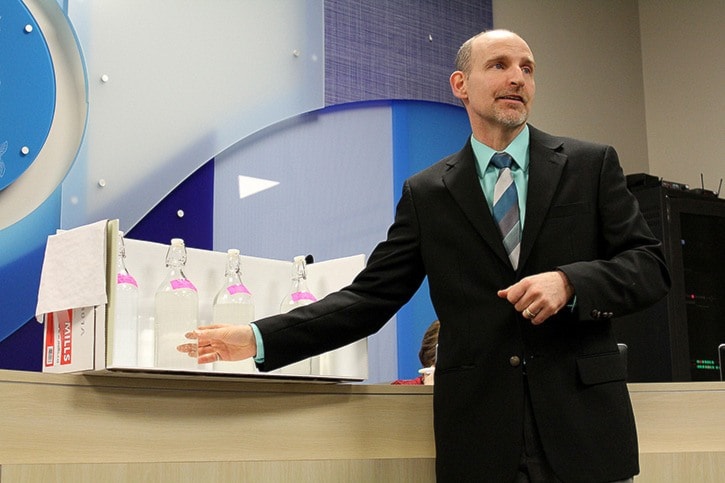A White Rock official said Monday that high levels of arsenic and manganese in the city’s water supply would not have been addressed had the city not taken ownership and operation of the utility last fall.
Following a presentation from director of engineering and municipal operations Greg St. Louis at Monday’s council meeting – during which he highlighted the city’s accomplishments since the Oct. 30 takeover – Coun. Lynne Sinclair said previous owners Epcor “had no plans to treat for arsenic and manganese.”
“Now that we own the water we are fully in charge of that and I think that’s a huge benefit to our community to... be able to address those issues, rather than leave it in the hands of a private company.”
For several years, levels of arsenic and manganese have been near the maximum allowable levels, as determined by Health Canada, at some of the city’s seven wells.
However, prior to selling the utility to the city last fall – for a yet-to-be determined price – Epcor had explored options for treating arsenic and manganese; a 2014 report to Fraser Health estimated it would cost the utility an additional $9.5 million to add arsenic and manganese treatment to the Total Water Quality Management Plan.
Fraser Health had given Epcor a December 2018 deadline to implement a treatment plan in the event the arsenic and manganese levels began to exceed the guideline limits. According to the report, Epcor planned to monitor the levels and work to implement a treatment plan should the need arise.
City manager Dan Bottrill told council Monday that the city is exploring options for treatment. He made the statement as he presented a report on the estimated $27-million price tag for the city to join the Greater Vancouver Water District, which he described as a “significant cost item.”
Bottrill said the GVWD report “provided some context in terms of why the city believes dealing with arsenic and manganese treatment is the right way to go,” later noting that the city could still explore joining Metro’s water supply.
Bottrill pointed out the GVWD option would also include $1.5 million of annual “bulk water supply” as well as maintenance costs, which he estimated would increase water rates by 30 to 40 per cent.
“It’s much more efficient in terms of economy to deal with your own water supply, if you have one,” he said.
Bottrill told PAN Wednesday that the city is now conducting “bench tests” with the addition of chlorine throughout the system, and once an implementation plan is in place, will be seeking approval from Fraser Health before secondary treatment is implemented citywide.
Asked why the city’s plans seem contradictory to a Feb. 5 city news bulletin that stated the city was to start the addition of chlorine this month, Bottrill said the city is being “proactive.”
“We’d rather give people ample warning and then delay if we need to, based on what our bench tests are telling us,” Bottrill said.
Bottrill and St. Louis reiterated concerns to council Monday about the esthetic quality of the water once chlorination is in place; the high levels of manganese are expected to react with chlorine and cause cloudiness, fixture staining, odour and taste.
During his presentation on water quality, St. Louis brought in water samples showing varying levels of cloudiness after four hours and 12 hours of being treated with chlorine.
“It’s safe to drink, but it’s going to have issues with the esthetics,” St. Louis said.
City staff – working with a consultant – initially recommended the use of chloramine, a mix of chlorine and ammonia, as a secondary disinfectant. Chloramine would have less of an esthetic reaction with manganese, staff said in December.
Residents protested the use of chloramine, which many said posed health, environmental and infrastructure risks, and in January, council voted to treat the water with chlorine, not chloramine.
Monday, Coun. David Chesney asked St. Louis if there was any chance the city would have to revisit chloramine as a treatment option.
“I think most people still have a mortal fear that something would have us have to go back to consider chloramine,” Chesney said.
St. Louis responded that the issue is a “council decision.” When pressed by Chesney if there is anything that might force the city to reconsider chloramine, St. Louis deferred to Bottrill, who said the matter was “completely up to council.”
“We have discussed the issue of esthetics,” Bottrill said. “It’s one thing to talk about it, it’s another to see it. We’re doing our level best to work with the direction we’ve been given to chlorinate the water.”
The city will host a community forum on water-related issues March 2 at 5:30 p.m. at the White Rock Community Centre.
